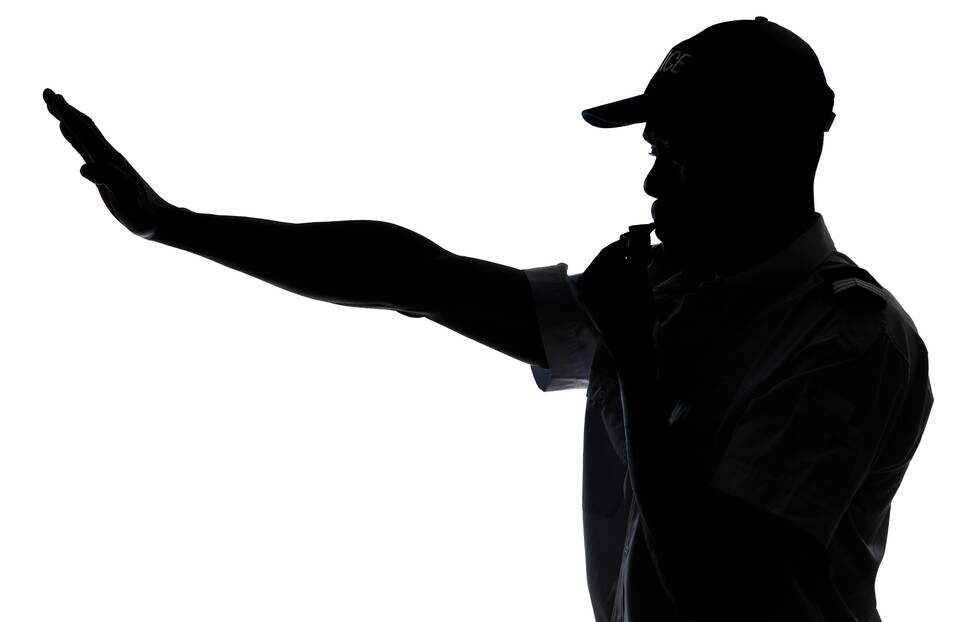
Bill Foran was Group 10’s premier referee throughout the 1980s and 90s. Through 20 seasons on the field, he gleaned a true insider’s perspective into an era many regard as the competition’s heyday. He spoke to the Central Western Daily about the best players and performances from those decades ...
TWENTY years since he last blew a whistle in anger, Bill Foran can still recall the best sledge he heard on a Group 10 rugby league field.
On a typical winter’s day at West Cowra Oval in the late 80s, the experienced referee was endeavouring to keep the fiery clashes between the hosting Magpies and Bathurst St Pat’s from combusting into a full-blown brawl.
Seemingly working against that goal was Cowra’s centre Wilfred Williams, who, having played a single season for each of Eastern Suburbs, Western Suburbs and St George, was one of the bush competition’s classiest outside backs.
He was also renown as a player who reveled in the dark arts of on-field niggle, someone who relished pushing the boundaries of both the game’s legalities and a referee’s patience.
As a chastened Williams approached the trio to learn his fate, he couldn’t hold his tongue. “Shouldn’t you boys be riding winners at the Gulargambone Picnic races instead of here picking on me?”.
With Williams – father of South Sydney halfback and Indigenous rights spokesman Joe – stirring the pot, there was little surprise when push came to more than shove that afternoon in Cowra, the teams foregoing football in favour of fisticuffs.
When the dust had settled, touch judges Dick Perry and Barry Goodlock singled out Williams as the fight’s protagonist, and he was invited to join the officials to discuss his actions and their repercussions.
In Foran’s retrospective opinion, he and his on-field colleagues made for a less-than-imposing sight. “Dick and Barry were both of small stature,” Foran, himself hardly a giant, recalled.
As a chastened Williams approached the trio to learn his fate, he couldn’t hold his tongue. “Shouldn’t you boys be riding winners at the Gulargambone Picnic races instead of here picking on me?”
The NSW Country representative’s wit earned its just desserts courtesy of the trio’s laughter. Moments later, his actions were accorded theirs.
HAVE WHISTLE, WILL TRAVEL
BORN in Sydney and raised in Yass, Foran himself was a promising junior rugby league talent, representing Riverina at schoolboy level before a badly broken collarbone saw him switching playing jerseys for referee’s uniforms.
He gained his senior grade accreditation as an 18 year old, buttressing his experience in Canberra with a tour to New Zealand in the company of a Group 8 side in 1972.
Foran moved to Orange in 1978, and spent his next 20 years’ worth of Sundays directing traffic on Group 10’s fields, punctuating numerous seasons with appointments to take control of first grade grand finals.
His reputation earned him opportunities at international level, refereeing when Great Britain played Riverina at Wagga Wagga, New Zealand took on Newcastle, and NSW Country Firsts faced Papua New Guinea at Bathurst’s Carrington Park. He also officiated in “eight or nine” City-Country games in Sydney.
Nearer to home, Foran took part in a refereeing exchange program which saw him adjudicate games in Group 11, as well as at since-discontinued divisional knockout tournaments which pitted the best sides in Group 10 and Group 11 against those from Group 14, usually featuring teams from Gilgandra and Coonabarabran, and Group 15, which included sides from Nyngan, Bourke, Brewarrina and Goodooga.
THE GAME’S ELITE ON HIS HOME TURF
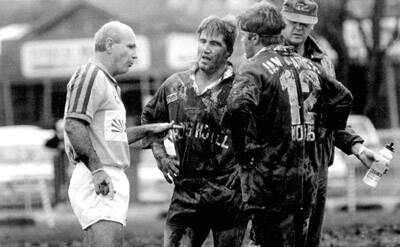
IT was at one such tournament he first laid eyes on a teenaged back-rower named Ron Gibbs, born and bred in Brewarrina and representing Group 15. In a celebrated career Gibbs won a NSW Rugby League premiership with Manly Warringah in 1987, and was, according to Foran, on the fast track to elite success from a young age.
“He was quick and tough, even as a boy. You could tell he was going to go places,” he explained.
At the same regional level Foran was on the field with Ted Goodwin, who had stints as captain-coach with Parkes Spacemen and Forbes Magpies in Group 11 after winning a NSWRL premiership with St George in 1977. Goodwin, who played four tests for Australia and sired three National Rugby League players in Luke, Bronx and Bryson, “still had it,” according to Foran. “He was just a class act.”
Other internationals to grace Central West fields and come under Foran’s command included Ron Hilditch and Bob O’Reilly, teammates and NSWRL premiership winners with the Parramatta Eels in 1981.
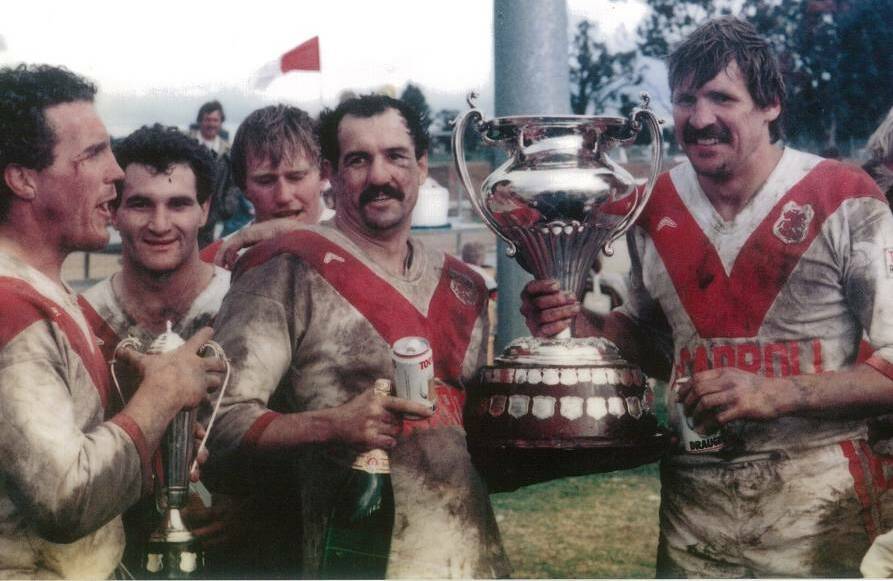
Hilditch was captain-coach of Mudgee from 1986 to 1988, leading the Dragons to a premiership in his first year in charge alongside fellow former Eel, fullback Phil Mann, and falling one win short of another title in 1987. Foran nominated the appropriately nicknamed ‘Hitman’ the most ferocious tackler he saw in Group 10, with Lithgow Workies hard man Kip Miranda, a mainstay in the front-row of Western Division sides, almost as feared by 80s and 90s ball carriers.
O’Reilly, meanwhile, was a part-time and somewhat reluctant recruit for the Magpies when he moved to Cowra to assume ownership of a nearby pub at the conclusion of his metropolitan playing days.
THERE’S NOTHING QUITE LIKE A LOCAL DERBY
AS thrilling as it was to take the field with the game’s superstars, Foran remembered the “extra something” produced by Group 10 derbies. Given the make-up of the competition in that era, there was no shortage of all-local games to look forward to in each season’s draw.
Bathurst boasted three sides in St Pat's, the since-defunct Charlestons, and Penguins (now Panthers); Lithgow had two in Workies and Shamrocks, the latter disbanding in 2000; while Orange had the same two - CYMS and Hawks – as in modern times.
How highly-anticipated were the all-Orange clashes? “CYMS fans would head to Wade Park straight after 7 o'clock mass to make sure they got the best seats,” Foran laughed.
“There was always something extra in derbies, the crowds were always bigger and the players could feel that.”
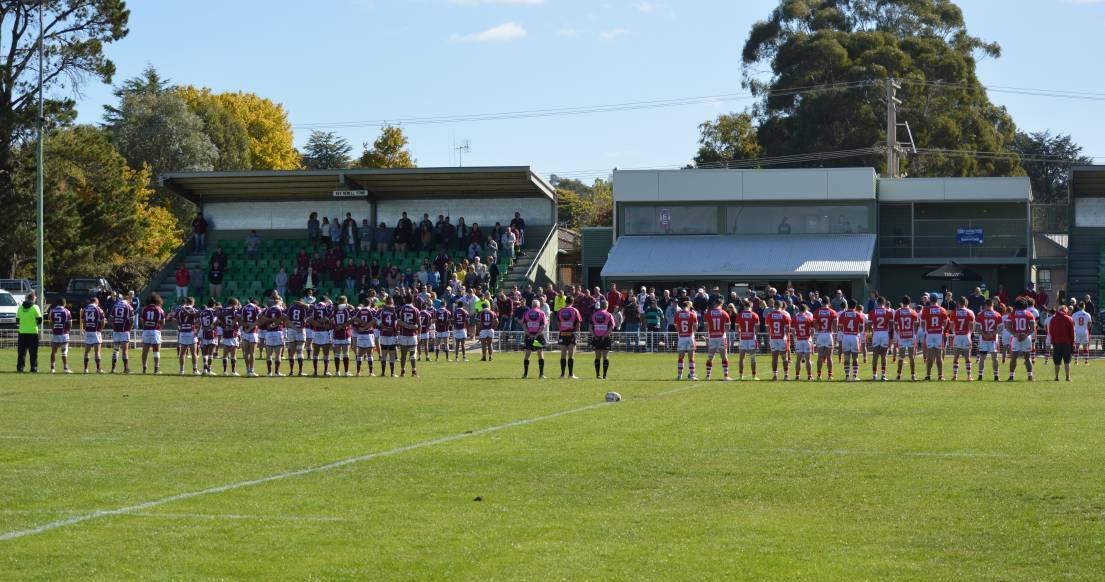
And then there was Blayney. Seemingly without an arch-rival through a quirk of geography, the Bears and their grizzly supporters manufactured their own derby grudges by directing their fury at their big brothers to the north.
“Those Blayney teams took great pride and pleasure in beating the Orange sides,” Foran said, adding the King George Oval faithful “were very vocal, and quick to give advice” to referees.
Defeating CYMS and Hawks, along with the rest of Group 10, was something the Bears did with almost monotonous regularity, especially in the 1990s, when the competition’s major silverware was returned to its most minor centre an astounding four times – 1990, 1993, 1996 and 1998.
Foran said that success stemmed from playing rosters bursting at the seams with talent, including John Vanderstock, the Mooney brothers (the "organised" Tim and "extremely speedy" Steve), and a factory line of skillful types sporting surnames like Hobby and Stammers which are still found in Bears' programs to this day.
THE GREATEST GAME OF ALL
THE best game of Group 10 football Foran ever refereed wasn’t originally scheduled to be played at all.
Blayney Bears and Orange Hawks finished the 1996 regular season behind minor premiers Cowra, and squared off in the first week of the semi-finals to earn a crack at the Magpies.
When that game finished in a thrilling draw, the two sides were asked to play a replay at Bathurst’s Carrington Park the following Wednesday night. The result was the finest all-round display of rugby league Foran directed in his decades in Group 10.
“It was the hardest, most skillful football I ever saw while refereeing,” Foran said.
They were stacked with talent, and played as well that night as I’d ever seen any teams play in Group 10.
“There was so much on the line, it was incredibly intense, but both teams were at their best. They were stacked with talent, and played as well that night as I’d ever seen any teams play in Group 10.”
In the end Blayney, powered by Geoff Blinkhorn, James Grant and Robert Walsh, inched past the Asa Amone-inspired Hawks.
The teams were so exhausted by their efforts both lost their next games: Blayney falling to Cowra, Hawks’ season ending at the hands of Mudgee. But the Bears atoned for that defeat, sweeping past the Dragons in the preliminary final before downing the Magpies 34-23 at West Cowra Oval.
OH CAPTAIN-COACH, MY CAPTAIN-COACH
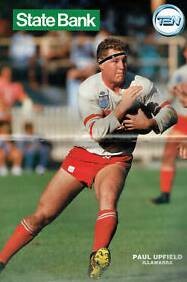
IN an era where some captain-coaches’ résumés featured state and international experience, it was a relatively unheralded journeyman who Foran anointed the competition’s finest captain-coach of the 80s and 90s.
Paul Upfield, a five-eighth and lock forward who played in NSWRL with the Illawarra Steelers, St George Dragons and Balmain Tigers, retired from Sydney football in the early 90s having played for NSW Country in its annual clash with City in 1988.
Relocating to the Central West, he spent the the next decade collecting silverware for the clubs wise and fortunate enough to secure his leadership services.
Upfield played in grand finals and won premierships with Bathurst Penguins and Parkes Spacemen before claiming a storied Group 10 title when Hawks defeated Blayney 30-16 at King George Oval in 1999.
(Incidentally, Foran nominated Hawks’ Fijian-born flyer Wise Cutter, who earned man-of-the-match honours courtesy of his hat-trick in that same grand final, the best finisher of the period. “When he got the ball in some space, that was it, it was all over.”)
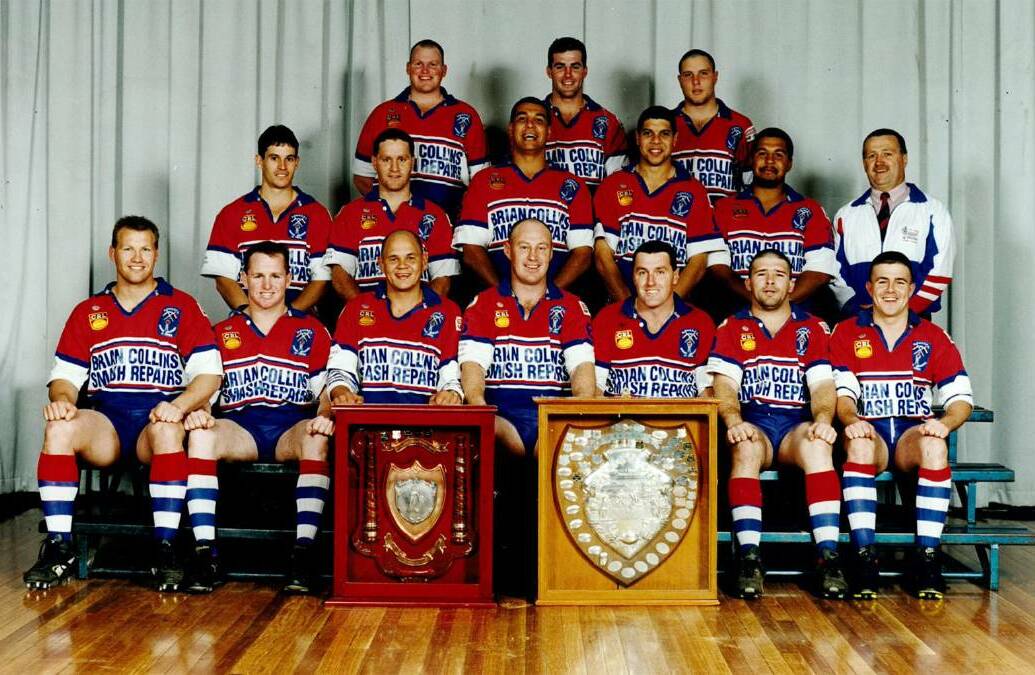
Upfield then played for the Bears – leaving the two blues in less than amicable circumstances courtesy of a pay dispute – after taking a job as the licensee of the Tattersall’s Hotel in Blayney.
Foran said it was the experienced mentor’s measured manner and communication skills, as much as his undeniable footballing talent, which steered his sides to success.
“He was always in control, on the field and off,” Foran explained. “He wasn’t a hot head, he gave clear directions to his players, and they responded.”
TIME FOR SOME FORWARD THINKING
AS a referee, Foran spent the majority of his on-field time in the centre of the park, affording him a bird’s-eye view of the battle for the ruck which goes a long way to deciding most rugby league contests.
In that hotbed of hits and havoc, it was Lithgow Shamrocks’ Ross Gibson and Orange Hawks’ Jamy Forbes who he labeled the finest forwards of the age.
Gibson, a workhorse second-rower who plied his tackle-heavy trade in the early 1980s, played his junior football with the Penrith Panthers. He was Shamrocks’ captain-coach when they won the premiership in 1982, defeating Bathurst St Pat’s 16-15 in front of the euphoric Lithgow faithful at the showground.
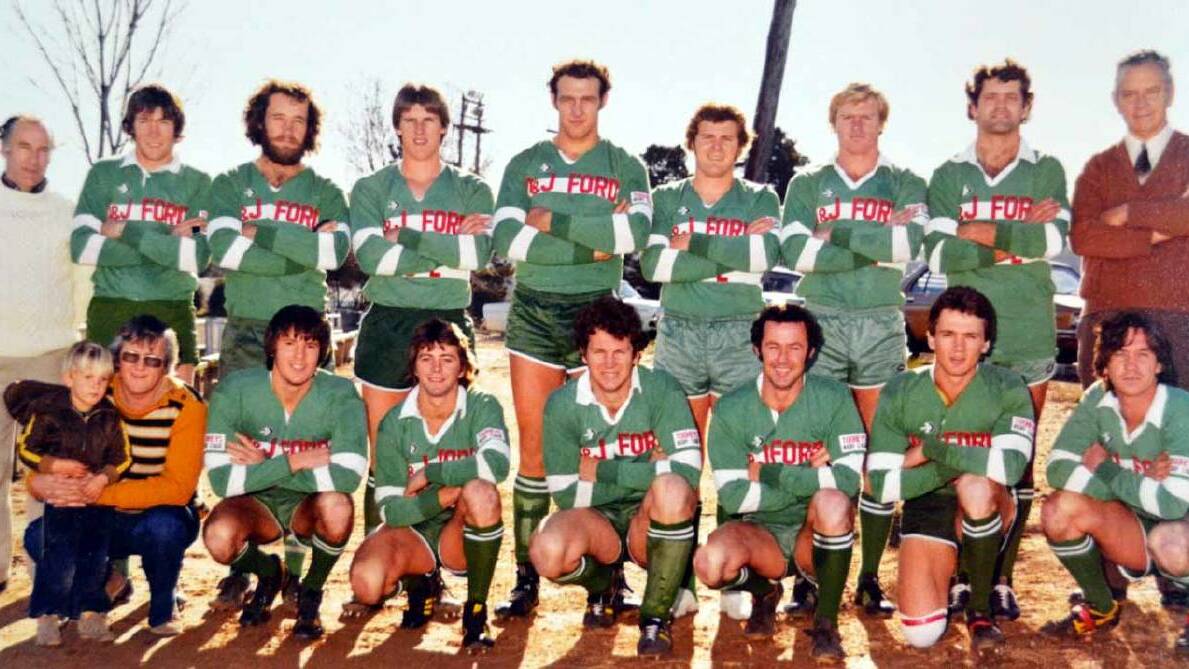
“A typical Lithgow forward,” was how Foran described his style and attributes. “He was as hard as nails and tackled all day. A true leader of his forward pack.”
Gibson played for and captained NSW Country Firsts and, in his post-Shamrocks career, was named Country Rugby League’s Player of the Year in 1984 while contracted to the Wyong Roos.
Forbes, meanwhile, was hooker in Paul Upfield’s fabled 1999 Hawks outfit which won the club’s first grand final since 1955, when it was known as Orange Emmco.
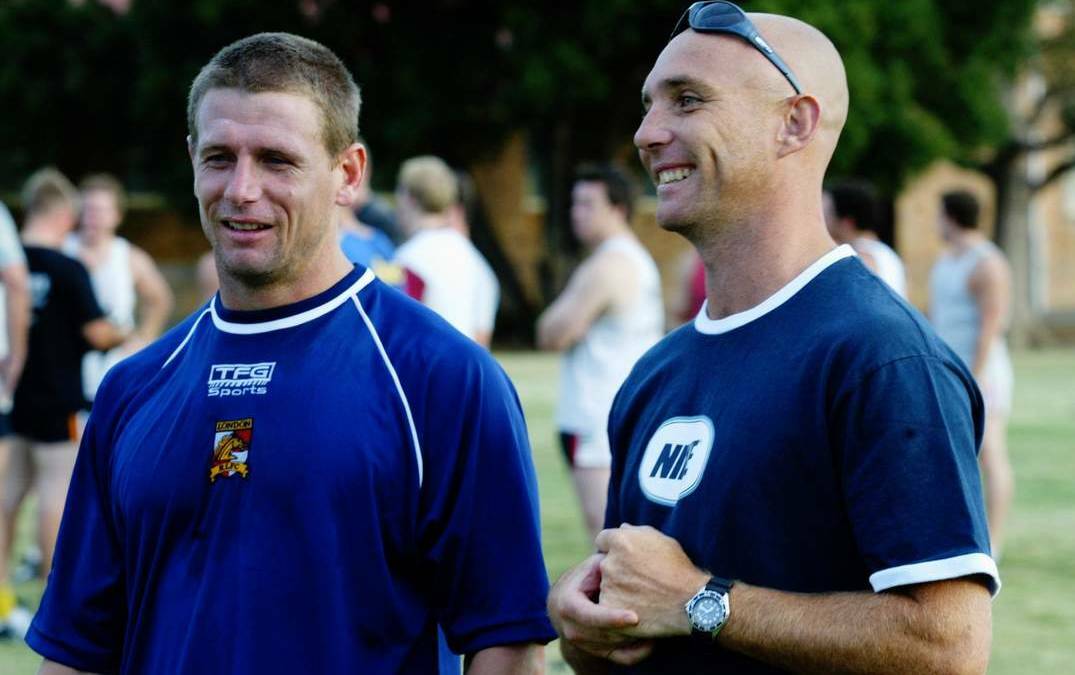
Foran argued the “crafty and tough” rake’s greatest strength lay in his ability to bring out the best in his teammates. “He was in the thick of the action and steered Hawks around,” Foran said. “There weren’t many players that were as tough as he was and as skillful at the same time.”
Foran pointed to the “great players [Forbes] had around him, including Upfield and Jamie Cochran”, who enjoyed seven seasons in Sydney with Canterbury Bankstown Bulldogs, Balmain Tigers and South Sydney Rabbitohs. Other notable Hawks in 1999 included Fuss Afoa, Steve Ekepati, Daniel Waters, James Carrick and Wise Cutter.
Forbes was named Country Rugby League’s Player of the Year in 1995, and relocated to the Central Coast in 2000.
DUMMY HALVES OF THE HIGHEST ORDER
FORBES was just one of a litany of first-rate hookers to grace Group 10’s paddocks in the 80s and 90s, with Foran arguing the position boasted a surfeit of class in his time as an adjudicator.
“There was, across my time refereeing in Group 10, an abundance of quality hookers,” Foran said. “More than any other position, most years there was a great depth of talent. With the old five-metre rule, they had to be smart to use the limited space on offer before the defence closed in.”
A fine example was Mark Hiney, a cornerstone for Orange CYMS in 1987 and 1988, and, like captain-coach Ray Spurr and other members of the dual premiership-winning campaigns, named in the club’s team of the century in 2009.
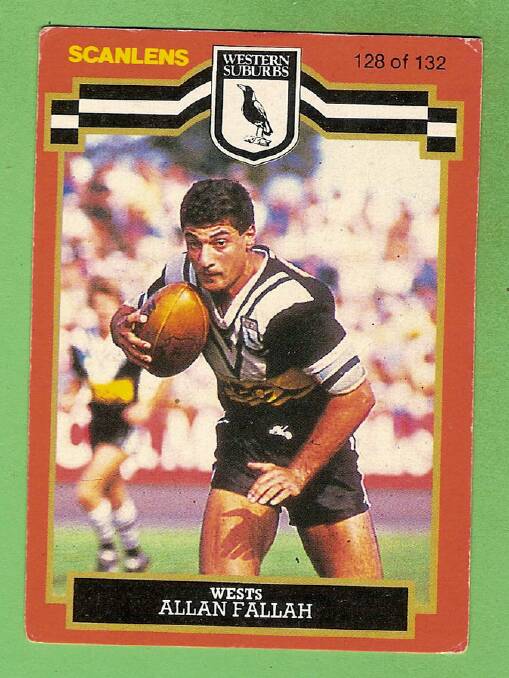
Allan Fallah arrived in Oberon for reasons away from the football field – he was posted to the small town as a school teacher. While there he spent two years as the Tigers’ captain-coach, impressing Foran and others as “a fantastic leader”. He also played for Western Suburbs in the NSWRL in the late 80s, and later represented NSW and Australia in Oztag at over-45s level.
Another Tiger on Foran’s best hookers list was Mick Schmiedel, who continued to leave his mark on bush footy as president of the Tamworth-centred Group 4 competition long after he’d hung up the boots.
Further examples of 80s and 90s Group 10 hookers coupling administrative achievement with on-field accomplishments were Dub McDonald and Mitch Luka.
A premiership winner and player of the year with the Cowra Magpies, McDonald played in excess of 350 games in the black and white jersey before taking on the president’s role and being awarded a life membership to the club, while Shamrocks’ Luka – “a very clever player” – was, as recently as last year, managing representative sides in Western Districts circles.
Foran also made mention of Colin Wood, who played hooker for Bathurst St Pat’s when they defeated Cowra 31-14 in 1989 to secure their first Group 10 major trophy in 16 years.
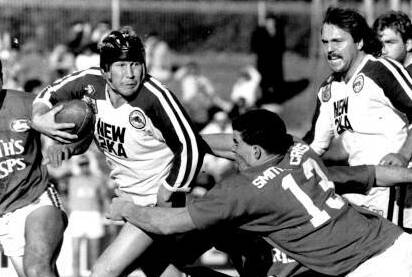
THE CREAM OF A GREAT CROP
SO who were the best players Foran saw in his two decades of whistle blowing in Group 10? While Hilditch was “a standout”, a couple of Dragons who led the Mudgee club in the middle of the referee’s Central West stint also remain prominent in his pecking order.
Garry Longhurst played with the Penrith Panthers and St George Dragons before heading to Mudgee in 1990. A second-rower with “an incredibly high work rate”, Longhurst later secured Western Division premierships with the Gulgong Terriors and Lightning Ridge. “He was a complete player,” Foran said. “Very tough and fit, great tackler, he just kept going.”
Tragically, Longhurst died in 2007, at the age of 43, after a three-year battle with Motor Neurone Disease.
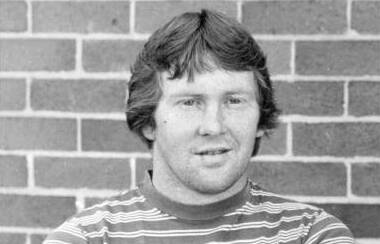
Foran also holds the Dragons’ five-eighth Steve McWhirter in the highest regard. The Gilgandra-born pivot represented NSW Country Firsts between 1984 and 1986, and led Mudgee to within 80 minutes of back-to-back Group 10 premierships in 1987 before going to down to CYMS 19-8 in that season’s grand final at Wade Park.
“He was the the best half I saw in my time,” Foran said. “Playing under the five-metre rule he had creativity and an ability to put players into space that others lacked.”

